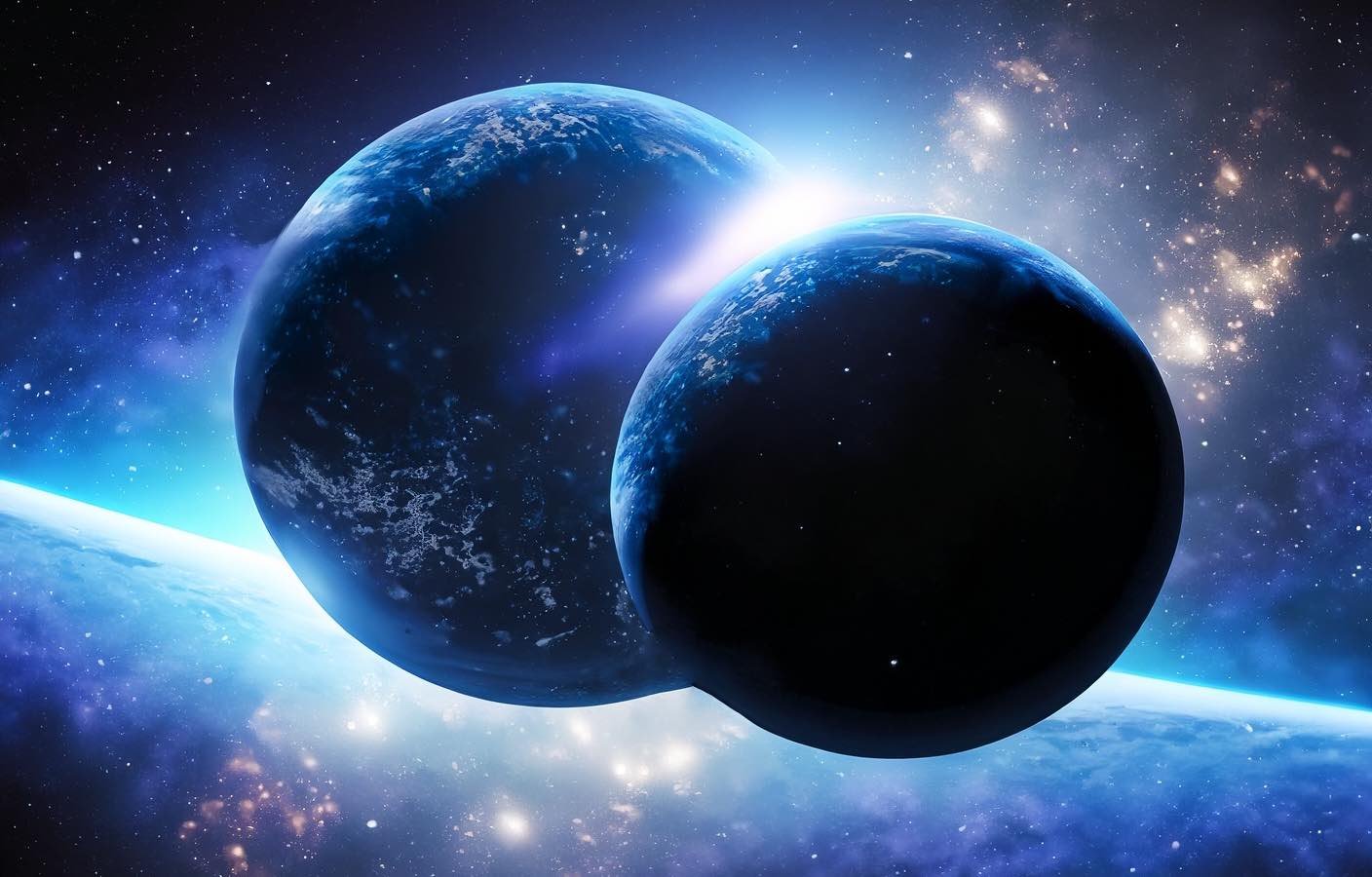A team of exoplanet hunters studying a single distant ice giant exoplanet over 1,800 hundred light years from Earth say they have witnessed what appears to be a catastrophic collision of two ice giant exoplanets.
Initially, the team thought they were studying only one exoplanet until they spotted a brilliant flash of infrared light along with what appeared to be plumes of dust in the orbit of star ASASSN-21qj.
Although potentially catastrophic for any life forms that call those ice giant exoplanets home, such a collision would be a rare find for exoplanet hunters, who say researchers in their field have never witnessed the phenomena before.
“To be honest, this observation was a complete surprise to me,” admitted the study’s co-lead author, Dr. Matthew Kenworthy from Leiden University, in a press release announcing the astonishing find. “When we originally shared the visible light curve of this star with other astronomers, we started watching it with a network of other telescopes.”
Fortunately for the international team of exoplanet hunters, their extended community was quick to react. Within days, they had independent confirmation that they had probably witnessed a once-in-a-lifetime cosmic event.
“An astronomer on social media pointed out that the star brightened up in the infrared over a thousand days before the optical fading,” said Kenworthy. “(So) I knew then this was an unusual event.”
Two Years of Data Confirm Exoplanet Hunters Witnessed Alien Ice Giant Exoplanet Collision
Over the next two years, the University of Bristol-based team logged follow-up observations, measuring and analyzing light spectra information that would either support or refute their initial readings and then feeding that data into various planetary simulations to see what happened.
The light-spectra analysis combined with the computer simulations that best matched the data revealed that the most likely explanation for the massive increase of infrared energy at the spectrum measured and for the length of time witnessed was a catastrophic collision of two massive ice giant exoplanets orbiting the distant star ASASSN-21qj, instead of just one ice planet meeting a brilliant but untimely demise.
“Our calculations and computer models indicate the temperature and size of the glowing material, as well as the amount of time the glow has lasted, is consistent with the collision of two ice giant exoplanets,” confirmed one of the exoplanet hunters, Dr. Simon Lock, a Research Fellow in Earth Sciences at the University of Bristol and co-lead author of the study.
Collision may create a ‘retinue of moons’ in the newly formed ice giant planet’s orbit
Published in the journal Nature, the study notes that the huge cloud of debris from the ice giant exoplanet collision actually took a full two years to pass in front of the star. But when it did, the debris cloud ended up dimming the star’s light more than enough to reveal the astounding yet catastrophic event to astronomers 1,800 light years away. The team also says that they expect the cloud of material to spend the next few years spreading out enough to create a “tell-tale scattering of light” that could be observed by both ground-based telescopes as well as ultra-sensitive IR platforms like the James Webb Space Telescope (JWST).
“It will be fascinating to observe further developments,” said study co-author Dr. Zoe Leinhardt, an Associate Professor of Astrophysics at the University of Bristol. “Ultimately, the mass of material around the remnant may condense to form a retinue of moons that will orbit around this new planet.”
Whatever happens and whichever instruments are used to follow up on an event that researchers have never witnessed before, the team says they “plan on watching closely what happens next in this system.”
Christopher Plain is a Science Fiction and Fantasy novelist and Head Science Writer at The Debrief. Follow and connect with him on X, learn about his books at plainfiction.com, or email him directly at christopher@thedebrief.org.

